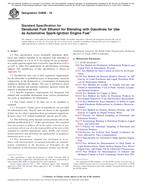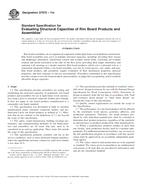1.1”This practice describes a general procedure for using the process compensated resonance testing (PCRT) via swept sine input method for metallic or non-metallic parts to compare resonance patterns from a sample under test to reference teaching sets of known acceptable and targeted defect samples. The resonance pattern differences can be used to distinguish acceptable parts with normal process variation from parts with targeted material states and defects that will cause performance deficiencies. These material states and defects include, but are not limited to, cracks, voids, porosity, shrink, inclusions, discontinuities, grain and crystalline structure differences, density-related anomalies, heat treatment variations, material elastic property differences, residual stress, and dimensional variations. This practice is intended for use with instruments capable of exciting, measuring, recording, and analyzing multiple whole body, mechanical vibration resonance frequencies in acoustic or ultrasonic frequency ranges, or both.
Product Details
- Published:
- 12/01/2020
- Number of Pages:
- 10
- File Size:
- 1 file , 340 KB
- Redline File Size:
- 2 files , 900 KB


